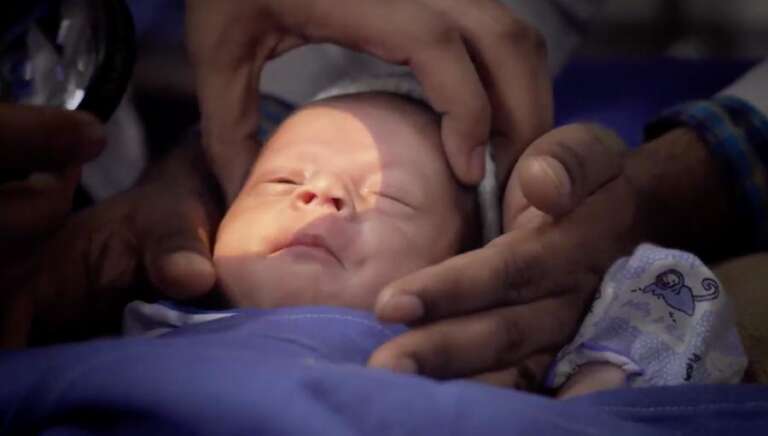Retinopathy of prematurity Screening
If your child is born prematurely, there’s a 50-50 chance he will develop some degree of retinopathy of prematurity. Since the disease has no outward symptoms, you can’t “see” it — and neither can the doctors and nurses who work in the neonatal intensive care unit. That’s why infants at risk for ROP are routinely screened by pediatric ophthalmologists using special equipment.
Testing & Diagnosis for Retinopathy of Prematurity (ROP) in Children
- All infants with a birth weight of less than 1,500 grams (about 3.3 pounds) or a gestational age of 30 weeks or less should be screened by an ophthalmologist.
- Infants with a birth weight of 1,500 and 2,000 grams or a gestational age of more than 30 weeks should be screened if other health troubles put them at high risk for ROP.
- The first exam should occur four to nine weeks after birth, depending on how premature the baby is.
- If the exam shows the retina is fully “vascularized” (its blood vessels have finished growing normally), no follow-up is needed.
- If there are signs of ROP, however, the ophthalmologist will set follow-up exams to monitor the condition and determine when treatment is needed.
- dilating eye drops, to enlarge the pupil (giving the doctor a bigger “window” into the eye)
- an eyelid speculum, which holds the eyelids open
- a scleral depressor, which helps move the eye into different positions so the entire retina can be checked
- Management of all childhood infections and allergies
- Trauma services
- an indirect ophthalmoscope, which has a special lens that sends a bright light into the eye, enabling the doctor to examine the retina
Doctors are also making increasing use of an innovative device called the RetCam, a special camera that takes high-resolution digital pictures of the retina. This provides detailed images that can be compared from one exam to the next to help track the health of your child’s eyes over time.
Why Adarsh super speciality eye hospital for your child’s eye care ?
For your child’s eye care, Adarsh super speciality eye hospital is there in the heart of Shivamogga city , easily approachable, well connected and who understand the importance of healthy eyes and good sight for the overall development of a child.
They are not only exemplary in their professionalism and training, but also in their ability to make friends with your child,ensuring trouble and hassle-free eye check-up for your precious little one. We ensure that the children look forward to a visit to the eye doctor.
This, of course, comes with the Adarsh super speciality eye hospital’s promise of professional integrity, and state of the art technology, at affordable rates for all, at a center near you.
What are the special tests and services that we offers for children?
We are fully aware that our children require special nurturing and care to thrive, and achieve their full potential. The team of eye care professionals is happy to partner with you in your efforts to ensure the best eye care for your child.
Adarsh super speciality eye hospital offers state-of-the-art technology in child vision care, with the empathy and compassion. The services in addition to primary eye care, include:
- Vision assessment and refraction under dilation
- Squint assessment and evaluation of binocular vision
- Amblyopia therapy
- Management of all childhood infections and allergies
- Trauma services
- Examination under sedation or anesthesia, if indicated. Comprehensive pre-anesthetic check-up and post-operative care.
- Glasses and low vision aids
- Surgical and medical management of childhood and congenital disorders, as indicated: congenital cataract, congenital ptosis, glaucoma and squint.
The surgeries performed routinely include:
- Phacoemulsification with intraocular lens implantation with and without posterior capsulorhexis and vitrectomy
- Intraocular lasers for RoP
- Ptosis surgeries including sling surgery and other lid reconstructions
Complex and straightforward squint surgeries including recti and oblique muscles, syringing and probing, dacryocystorhinostomy,as well as complex vitreoretinal surgeries and retinal lasers

